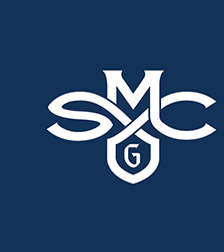Segmentation of Infrequent Performing Arts Consumers
SMC Affiliated Work
1
Status
Faculty
School
School of Economics and Business Administration
Department
Marketing
Document Type
Article
Publication Date
2016
Publication / Conference / Sponsorship
Arts and the Market
Description/Abstract
Purpose
– The purpose of this paper is to examine market segments within the broader category of occasional patrons of the performing arts. While similarities between these segments exist, important distinctions are also apparent. Design/methodology/approach
– The authors surveyed 347 performing arts patrons using a structured questionnaire. Their responses along 28 proposed motivational variables were subjected to factor analysis to reduce their dimensionality and collinearity. Cluster analysis was then applied to respondents’ factor scores to group subjects into homogenous segments for subsequent comparison along variables, including demographic and marketing mix elements.
Findings
– The authors find six key motivating factors influencing the attendance of performing arts events: personal; promotional; product; distribution; economic; and social motivators. The authors also find that infrequent consumers can be further subsegmented into disinclined and fringe consumers with different levels of performance attendance and dissimilarities in responding to motivators.
Research limitations/implications
– The survey was conducted in a single county within the San Francisco Bay Area, limiting the generalizability of results.
Practical implications
– Fringe consumers are more responsive to the personal benefits (e.g. cultural enrichment) derived from the core product offerings of a performance such as programming and quality of the performers. The disinclined segment is more influenced by economic, social, and distribution related elements associated with a performing arts event such as pricing, the accessibility (or convenience) of the venue, and the opportunity to socialize accompanying attendance.
Social implications
– The practice of relationship marketing by small local performing arts organizations (PAOs) has been emphasized and often advocated by researches in the most recent literature. In order to ensure the viability of PAOs beyond the short-term, further examination of audience development is imperative. This paper indeed places more attention on audience development with a particular focus on expanding audiences among subsegments of infrequent performing arts consumers.
Originality/value
– The central purpose of this research is to arrive at comprehensive profiles of subsegments within a group of infrequent arts patrons, along with viable differentiated marketing program and positioning approaches that would appeal to each of these consumer categories. Consequently, the authors address a significant gap in the performing arts marketing literature as few recent studies appear to have been structured to allow for the possibility of producing adequate subsegmentation information within a group of occasional performing arts patrons. Secondarily, this study also answers a call for future research to examine the internet as a channel of promotion for arts consumers.
Keywords
Attendance, Arts, Segmentation, Audience development, Infrequent patrons, Performing
Scholarly
yes
Peer Reviewed
1
DOI
10.1108/AAM-04-2014-0015
Volume
6
Issue
1
First Page
88
Last Page
110
Disciplines
Business | Economics | Marketing
Original Citation
Eric John Kolhede, J. Tomas Gomez-Arias, (2016) "Segmentation of infrequent performing arts consumers", Arts and the Market, Vol. 6 Issue: 1, pp.88-110, https://doi.org/10.1108/AAM-04-2014-0015
Repository Citation
Kolhede, Eric and Gomez-Arias, J. Tomas. Segmentation of Infrequent Performing Arts Consumers (2016). Arts and the Market. 6 (1), 88-110. 10.1108/AAM-04-2014-0015 [article]. https://digitalcommons.stmarys-ca.edu/school-economics-business-faculty-works/105


